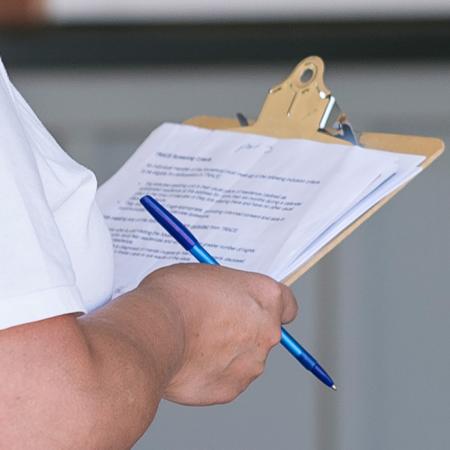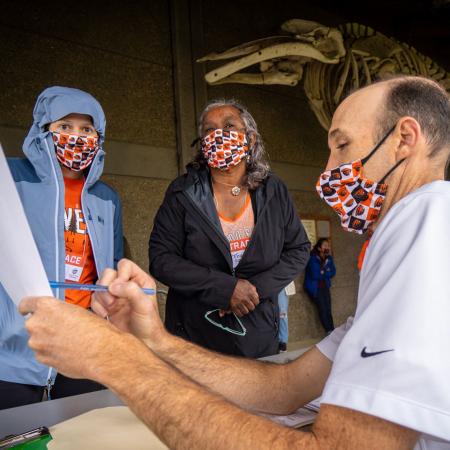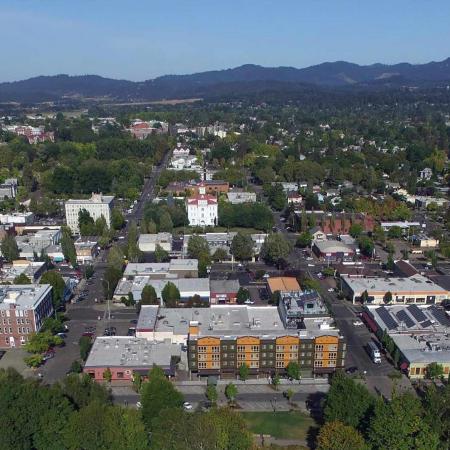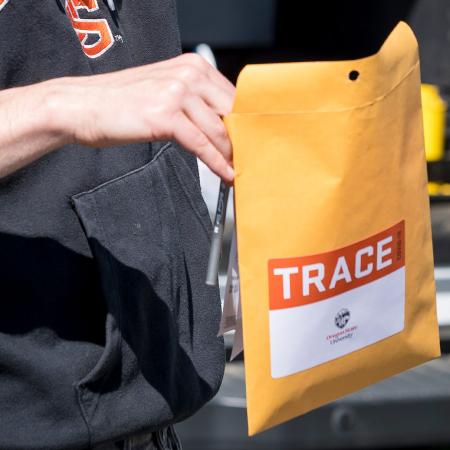CORVALLIS, Ore. – Oralia Mendez, a community health worker at Oregon State University, is among nearly 100 community members who are working in OSU’s newly launched TRACE-COVID-19 testing to help public health officials understand the prevalence of the pandemic virus in Corvallis – and possibly in other Oregon communities going forward.
Mendez is being joined by other traditional health workers and dozens of OSU students to help in the TRACE study, including Cassandra Lozano, Sarah Ingwersen and Joe Harrity. For OSU students, the study provides hands-on experience and the potential to make a local and global impact.
“The approach to the project is something that isn’t happening much elsewhere in the U.S., so it’s kind of exciting to be involved in research that is really progressive and innovative,” said Harrity, a graduate student in public health in Oregon State’s College of Public Health and Human Sciences. “I have felt through the pandemic like I wasn’t able to contribute in a meaningful way, so it’s nice to be able to do something that may have a positive impact.”
Over the next three weekends, Mendez, Lozano, Ingwersen and Harrity will be among the trained field staff knocking on doors of randomly selected homes in Corvallis neighborhoods to test community members for the virus that causes COVID-19. The effort, announced April 16, is among the first in the nation that will provide an overview of an entire community’s COVID-19 wellness.
The public health study is a joint effort of four OSU colleges – Science, Public Health and Human Sciences, Agricultural Sciences and the Carlson College of Veterinary Medicine – and in partnership with the Benton County Health Department. It is called Team-based Rapid Assessment of Community-Level Coronavirus Epidemics, or TRACE-COVID-19. The project will provide important epidemiologic information that has been lacking throughout the pandemic and will be especially helpful in establishing what percentage of people in the general population, including those who are not demonstrating symptoms of illness, test positive for COVID-19.
TRACE was launched this past weekend and over three remaining weekends will collect up to 960 samples weekly.
Mendez is OSU’s Community Health Workers Training Program coordinator and an instructor in the College of Public Health and Human Sciences. She is also a certified traditional health worker in the state of Oregon. Traditional health worker is an umbrella term for frontline public health workers who work in a community or healthcare system under the direction of a licensed health provider.
Traditional health workers serve as leads on the TRACE survey teams and are each supported by one or two student workers. Mendez and the other health care workers are handling the interaction with residents, asking questions and explaining the process.
Mendez said Corvallis residents are overwhelmingly supportive and enthusiastic about the TRACE study.
Participants in TRACE provide basic demographic information and are given a nasal-swab test kit that they administer to themselves inside their home and to their minor children, if they want them to take part. TRACE field staff wait outside residences, and study participants leave the completed test kits outside their front door. Field staff maintain a safe distance at all times and do not enter any residences. Field staff are also tested once a week for the virus and wear protective gear at all times. Completed tests are submitted to the Willamette Valley Toxicology lab to be tested for SARS-CoV-2, the novel coronavirus that causes COVID-19.
COVID-19 was first reported to the World Health Organization on Dec. 31, 2019, and has been confirmed in more than 2.8 million people worldwide and killed more than 198,000 people. In the United States, there have been more than 1 million reported cases – including more than 2,300 in Oregon – and more than 59,000 deaths nationwide. Benton County has had 29 confirmed cases and five deaths.
Harrity, an OSU graduate student, plans on doing community health work after graduation. Participating with the TRACE team is providing him with a real time public health opportunity that will help his future career.
“It’s really important to know the extent of the virus in communities all over the country,” Harrity said. “In order to resume normal economic activity, we are going to have to have an idea of how many people have the virus to prevent the pandemic from spreading out of control again. Being able to look directly at a community and figure out how widespread the virus is, is an important piece of information policy makers can use to make plans about when it’s going to be safe to start economic activity again.”
Fellow public health graduate student Ingwersen said the TRACE project allows team members and residents to make a difference.
“Participating in projects like this have very little personal risks and enormous rewards for the community,” she said. “Right now, so many of us are looking at the world wondering how we can do our part to make the suffering end.”
Lozano is a senior majoring in marine biology who found herself without a job after her ecology lab was shut due to the pandemic. When she heard about the TRACE project she thought it would be a great way to do applied research and directly impact policy decisions. She also liked that it was a switch from working in a laboratory.
“I think it’s really cool, being on the other side where I’m actually engaging with the general public and I’m watching a traditional health worker engage with a person who may not know much about virus and see how those two can meet in the middle,” she said. “That’s an awesome perspective to have as a young scientist.”
The TRACE study is being initially funded by OSU and a grant from the David and Lucile Packard Foundation, and has been aided by work of the OSU Foundation and the OSU Alumni Association.
Video featuring TRACE workers
Additional photos and video of the TRACE project
This story was originally posted by the Oregon State University newsroom.




